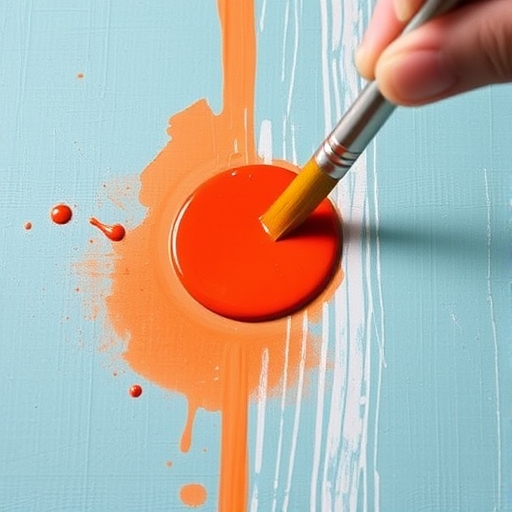How to Thin Water-Based Paint
Water-based paint is a popular choice for many DIY enthusiasts and professional painters alike due to its ease of use, low odor, and quick drying time. However, there are instances when you may need to thin water-based paint to achieve the desired consistency for your project. In this article, we’ll explore the reasons for thinning paint, the methods to thin it, and some tips to ensure the best results.
Why Thin Water-Based Paint?
Thinning water-based paint can improve its application and finish. Here are some common reasons for thinning paint:
- Improving Flow: Thinning can help the paint flow more smoothly, especially when using a spray gun.
- Reducing Viscosity: If the paint is too thick, it may not adhere well to surfaces or may lead to an uneven finish.
- Enhancing Detail Work: Thinned paint is easier to work with for detailed applications, such as trim work or intricate designs.
- Preventing Brush Marks: A thinner consistency can reduce brush marks and improve the overall appearance of the paint job.
- Water-based paint
- Distilled water (preferred for best results)
- A clean mixing container
- A stir stick or paint mixer
- A measuring cup (for precise thinning)
- A paint strainer (optional, for removing lumps)
- Use a brush or roller to apply a small amount of the thinned paint to a scrap piece of material similar to your project surface.
- Observe how it flows and dries. If it’s still too thick, you can add a little more water, mixing thoroughly after each addition.
- Use Distilled Water: While tap water may be more convenient, distilled water is preferred because it contains fewer impurities that could affect the paint’s performance.
- Avoid Over-Thinning: Adding too much water can weaken the paint’s adhesion and durability. Always test the consistency before proceeding with your project.
- Mix in Small Batches: If you’re working on a large project, consider thinning your paint in smaller batches to maintain consistency.
- Keep It Fresh: If you have leftover thinned paint, store it in a sealed container and use it within a few days to avoid spoilage.
How to Thin Water-Based Paint
Thinning water-based paint is a straightforward process, but it’s essential to do it correctly to avoid compromising the paint’s quality. Here’s a step-by-step guide on how to thin water-based paint effectively.
Step 1: Gather Your Supplies
Before you start, make sure you have the following supplies:
Step 2: Determine the Right Ratio
The amount of water you need to add depends on the type of paint and the method of application. Here are some general guidelines:
| Application Method | Thinning Ratio |
|---|---|
| Brush | 5-10% water |
| Roller | 10-15% water |
| Spray Gun | 15-20% water |
Note: Always refer to the manufacturer’s instructions on the paint can for specific thinning recommendations.
Step 3: Add Water
1. Measure the Water: Using a measuring cup, pour the appropriate amount of distilled water into your mixing container.
2. Add Paint: Pour the water-based paint into the same container. Make sure to maintain the thinning ratio you determined earlier.
3. Mix Thoroughly: Use a stir stick or paint mixer to combine the paint and water thoroughly. Ensure there are no lumps and that the mixture is uniform in consistency.
Step 4: Test the Consistency
Before applying the thinned paint to your project, it’s a good idea to test its consistency:
Step 5: Strain the Paint (Optional)
If you notice any lumps or inconsistencies in your thinned paint, consider straining it through a paint strainer before use. This will help ensure a smooth application and finish.
Tips for Thinning Water-Based Paint
Common Mistakes to Avoid
When thinning water-based paint, it’s easy to make mistakes that can affect your final result. Here are some common pitfalls to avoid:
1. Using Too Much Water: Over-thinning can lead to a weak finish that chips or peels easily.
2. Not Mixing Enough: Failing to mix the paint and water thoroughly can result in uneven application and color inconsistencies.
3. Ignoring Manufacturer Instructions: Always check the paint can for specific thinning instructions and recommendations tailored to the product.
FAQ
Can you thin all water-based paints?
Most water-based paints can be thinned with water, but always check the manufacturer’s guidelines. Some specialty paints may have different requirements.
How do I know if my paint is too thin?
If the paint runs easily off your brush or roller, or if it dries too quickly and leaves streaks, it may be too thin. Adjust by adding a small amount of paint to thicken it up.
What’s the difference between thinning paint and using a paint conditioner?
Thinning paint involves adding water to reduce viscosity, while paint conditioners are additives designed to improve flow, leveling, and drying times without significantly altering the paint’s properties.
Can I use other solvents to thin water-based paint?
Water is the recommended thinning agent for water-based paints. Other solvents, like alcohol or mineral spirits, can adversely affect the paint’s performance.
How long does thinned paint last?
Thinned paint should be used within a few days for the best results. Store it in a sealed container to prolong its shelf life.
Conclusion
Thinning water-based paint can significantly enhance your painting experience and the quality of your finish. By following the steps outlined in this article and keeping in mind the tips and common mistakes to avoid, you can achieve a smooth and professional-looking result. Remember, practice makes perfect, so don’t hesitate to experiment with different thinning ratios to find what works best for your specific project. Happy painting!

